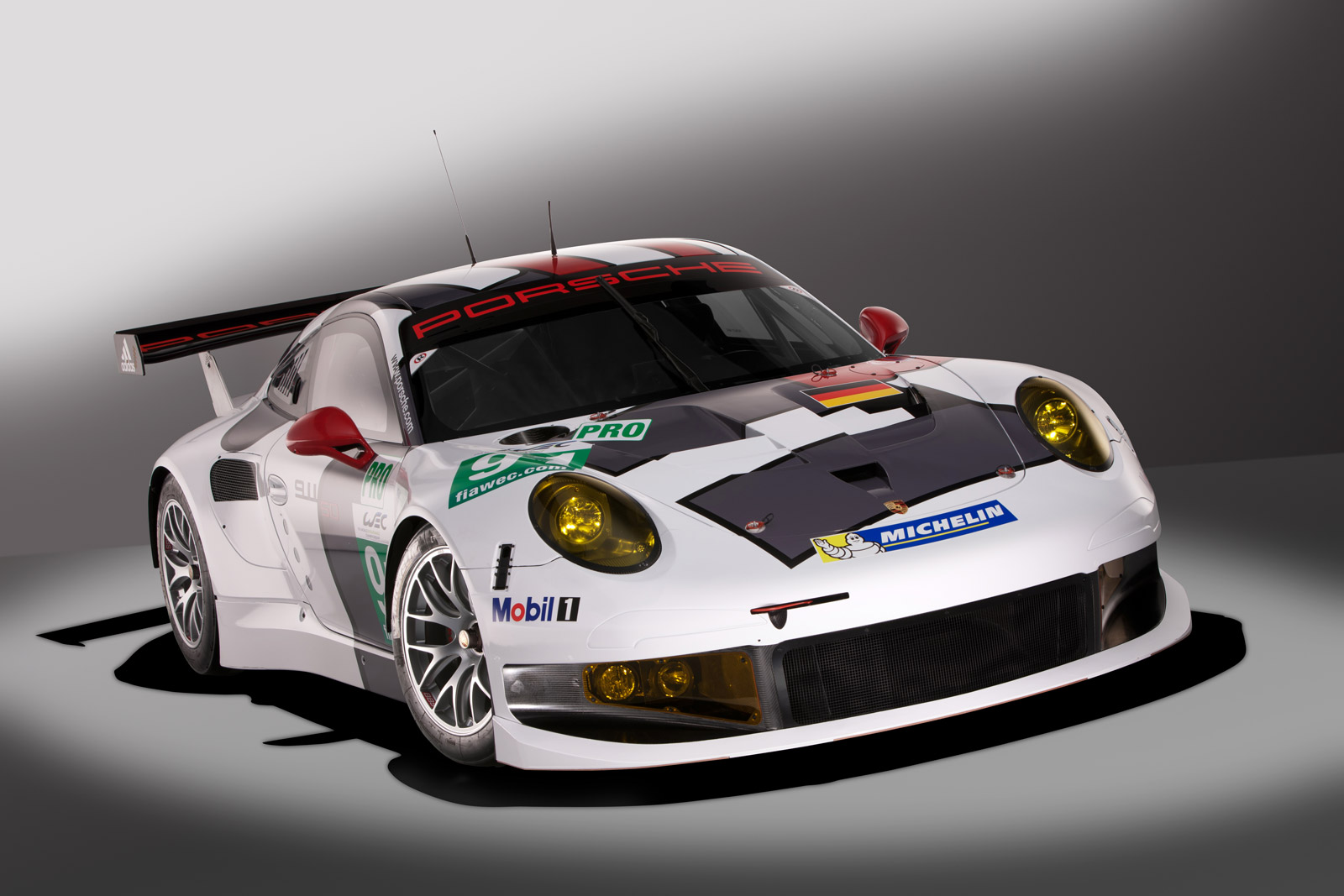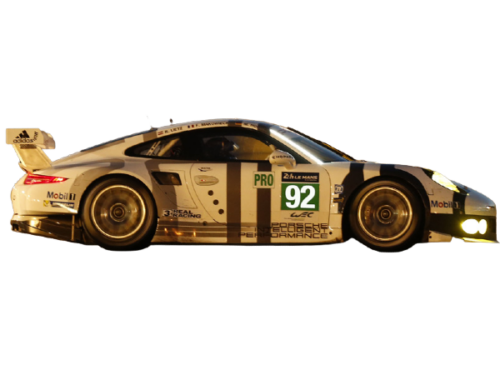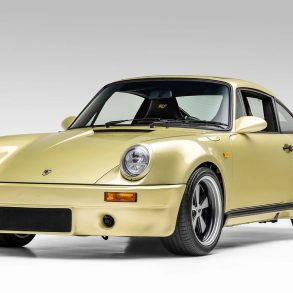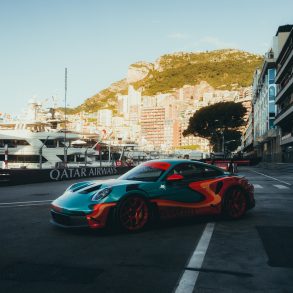(2013 – 2016) Porsche 911 RSR (991) – Ultimate Guide
Official photos: prototype 2013 February 21, production car 2013 March 28 / Premiere: 2013 April 14, Silverstone 6h race / Engine: 4.0 B6 with air restrictor, 338 kW (2013), 345 kW (2014, 2016) / Transmission: sequential, 6-speed
As the rules do not permit higher output engines, the engine for the 991 RSR was taken from the 997 GT3 RSR 4.0 and the development work focused on the chassis, body, aerodynamics and the gearbox. A wishbone front suspension replaced the McPherson struts used in 997.
A new development was the lightweight gearbox. One of the priorities in the development was the more evenly balanced weight distribution. The centre of gravity was lower, too. The front and rear lids, doors, underbody, wheel arches, rear wing, dashboard and centre console were constructed from carbon fibre. The minimum weight of the car was set by the rules and this formed a barrier for further enhancements.
WEC Classes
The World Endurance Championship (WEC) has two main classes: Le Mans Prototypes (LMP) and Le Mans Grand Touring Endurance (LMGTE, shortly GTE). Both classes have two levels – LMP is divided into LMP 1 & 2 and GTE is divided into GTE Pro and GTE Am. In the past the LMP class was known as GT1 and the GTE was known as GT2.
GTE Rules
As the manufacturers don’t have the same know-how nor the same amount of money to spend, the rules are set individually based on the ability of their car. Five areas are set for every competing car: air restrictor size (= engine power), minimum weight, fuel tank size, wing height and Gurney lip size. For example Aston Martins are allowed to have around 100 kW of power more than Porsches.
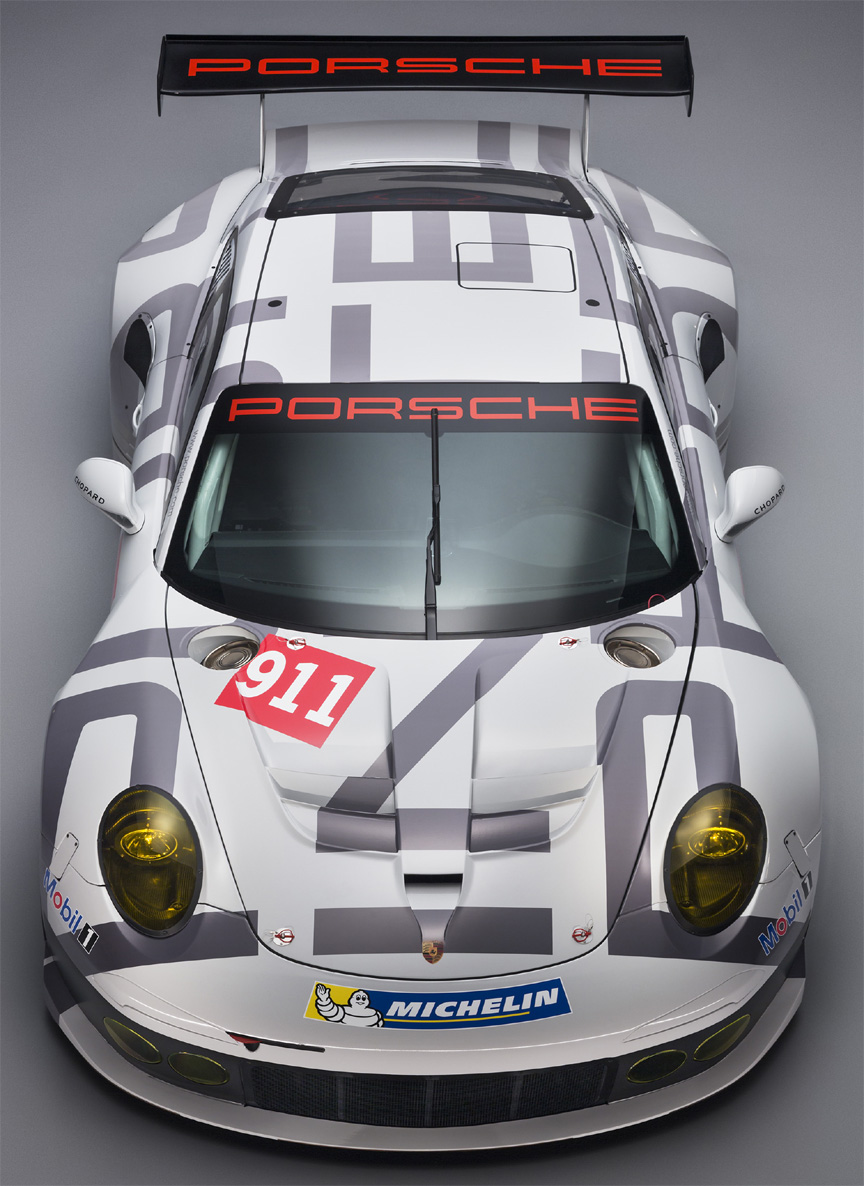
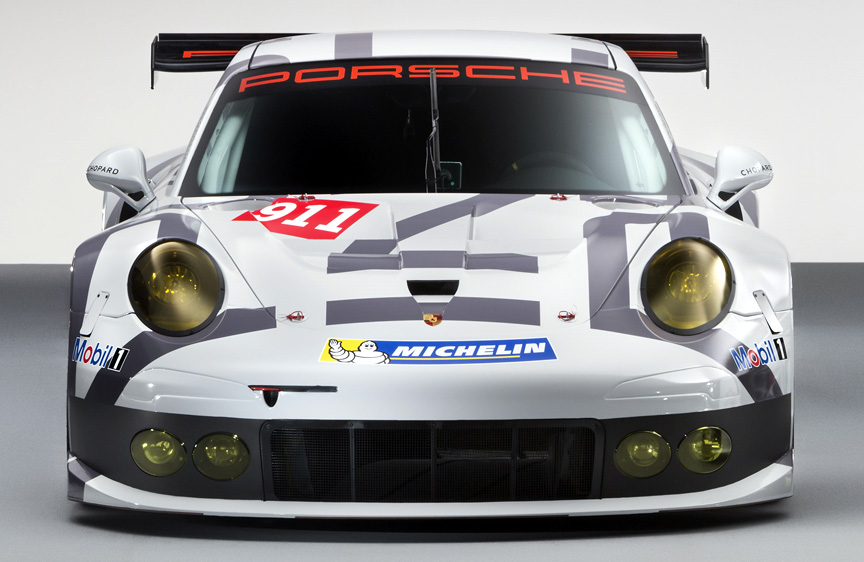
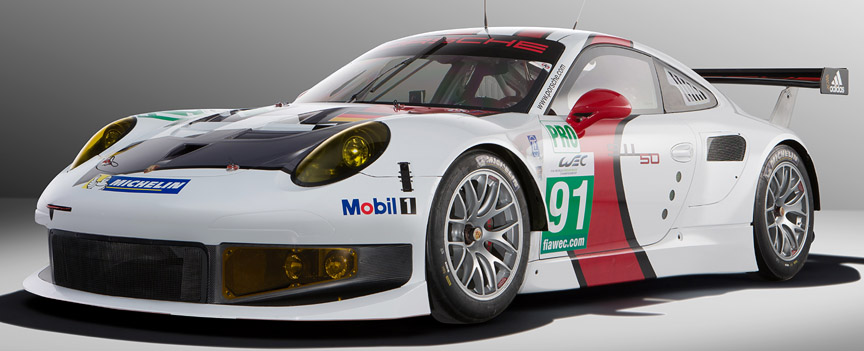
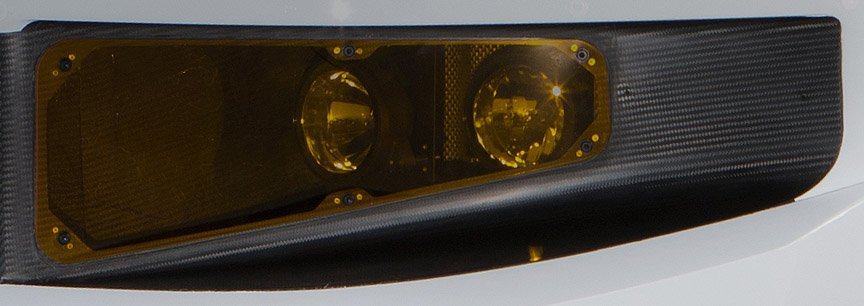
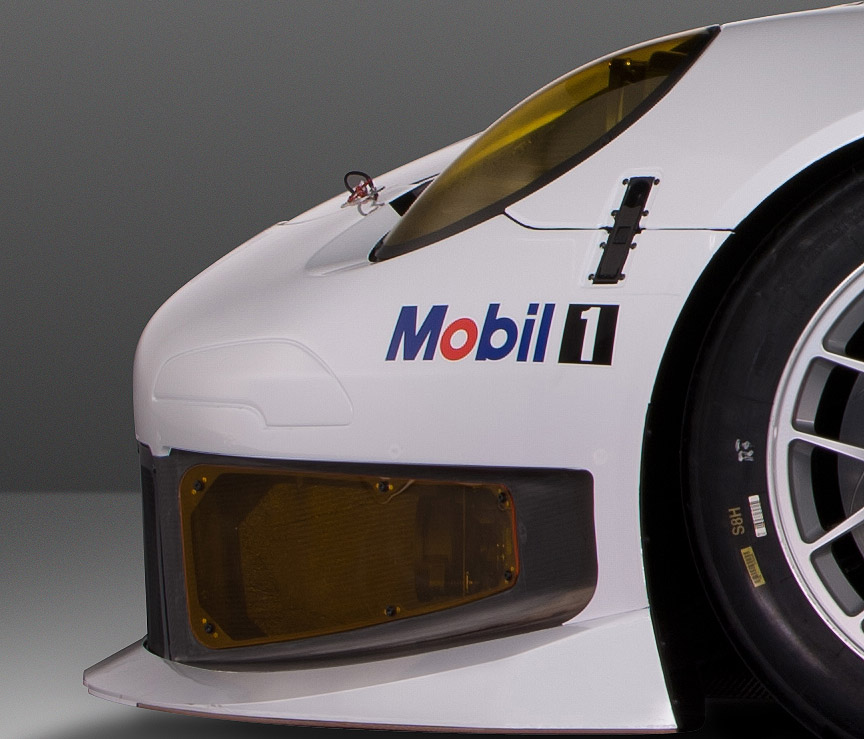
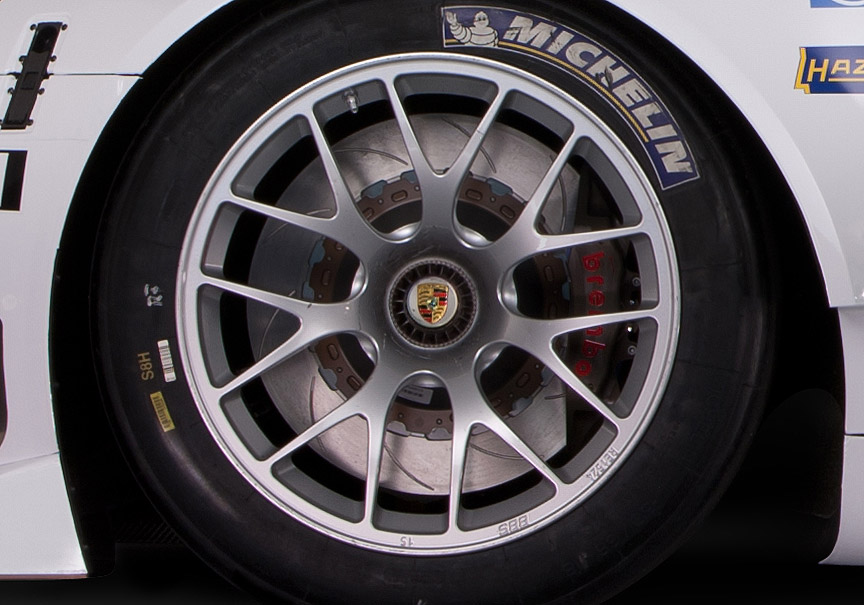
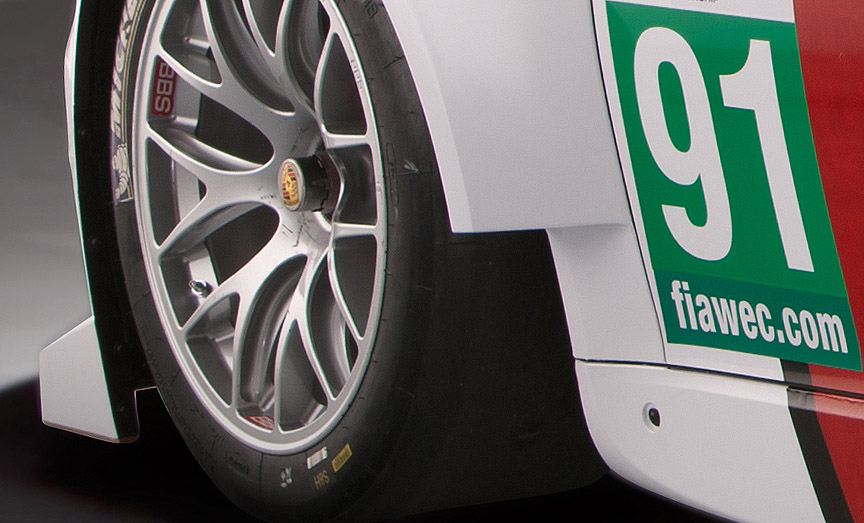
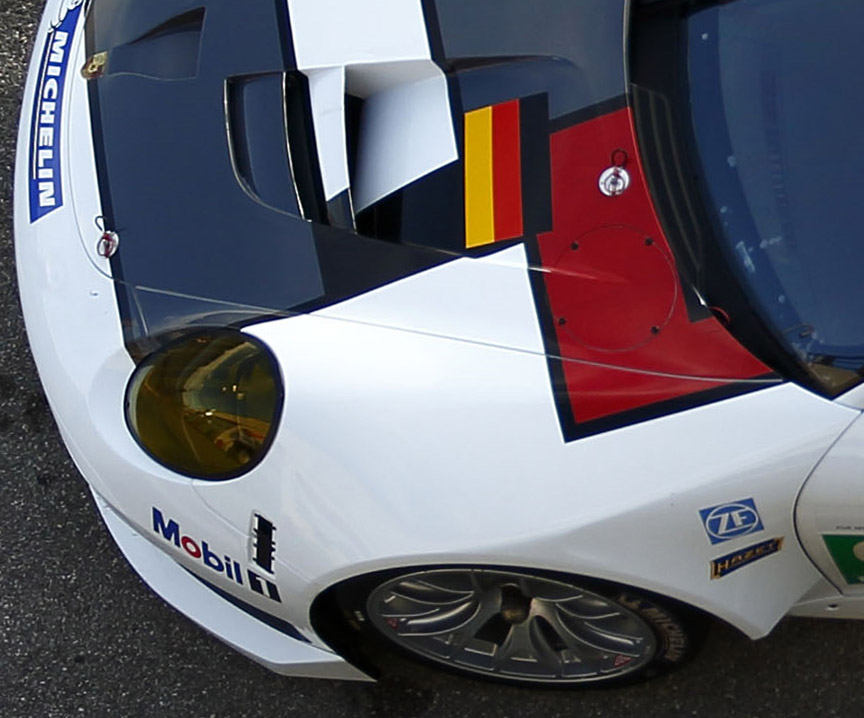
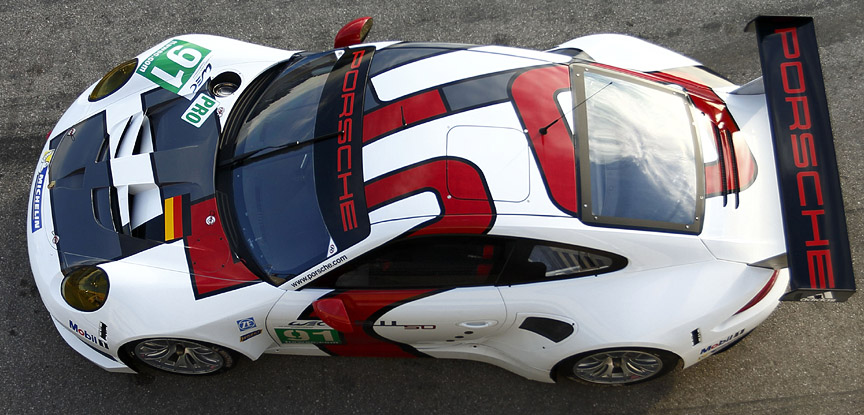
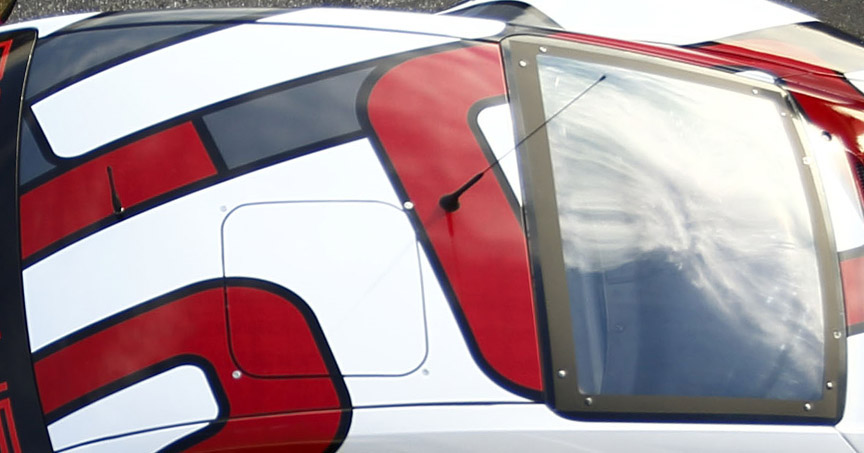
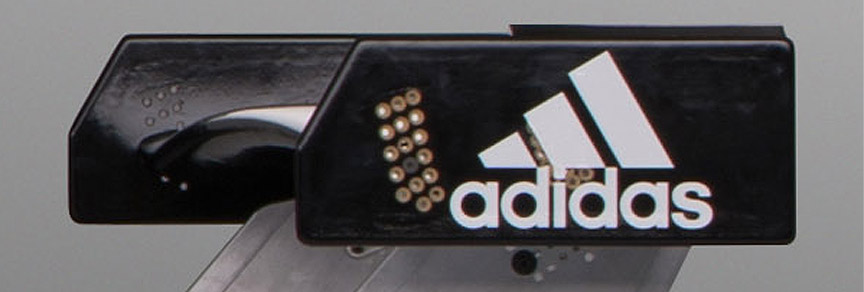
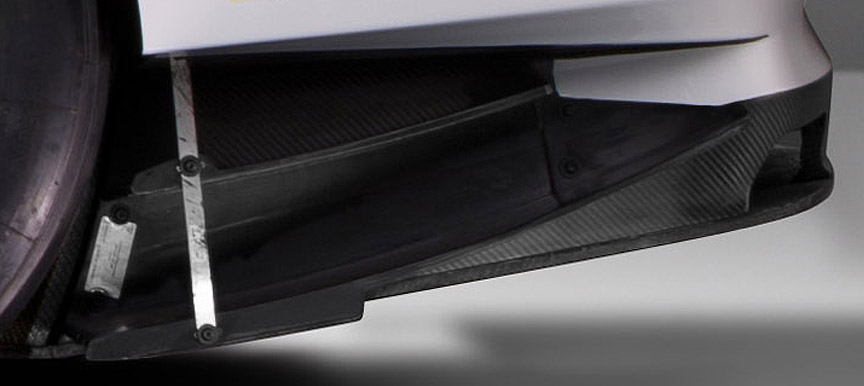

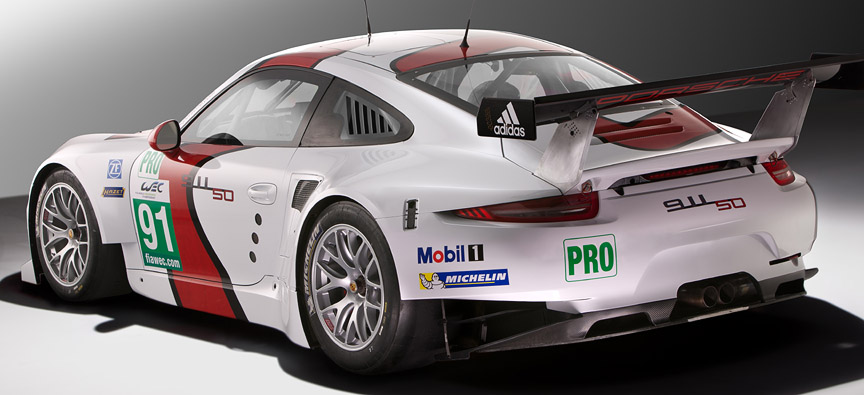
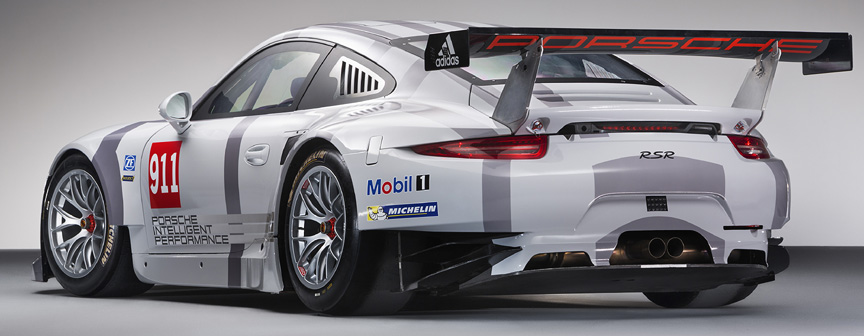
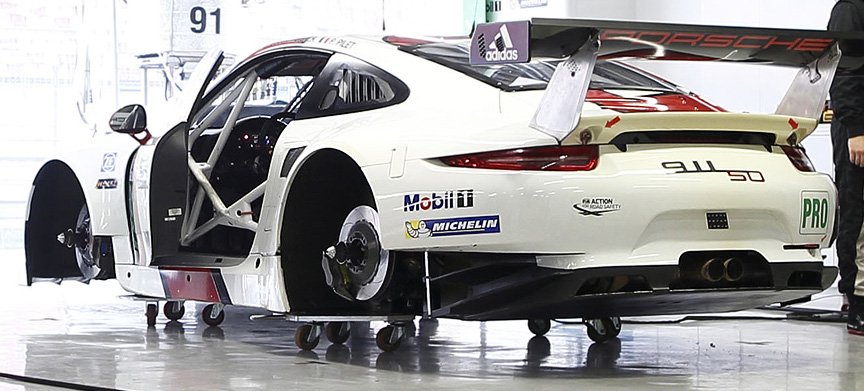
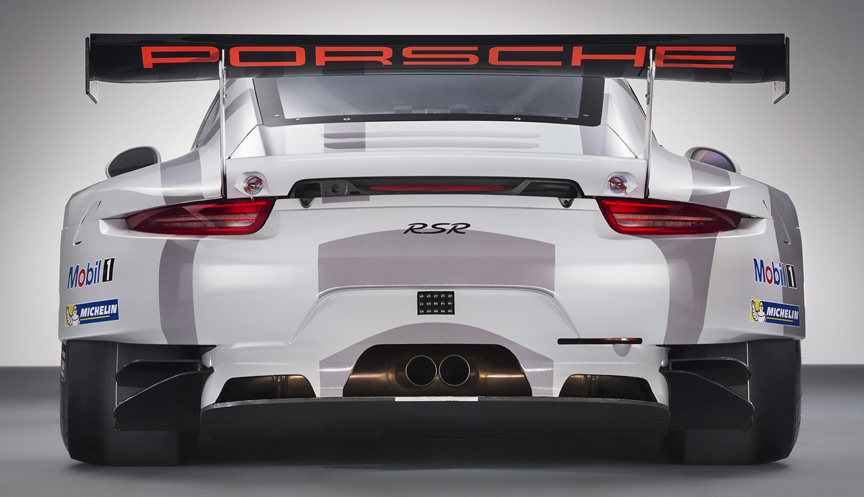
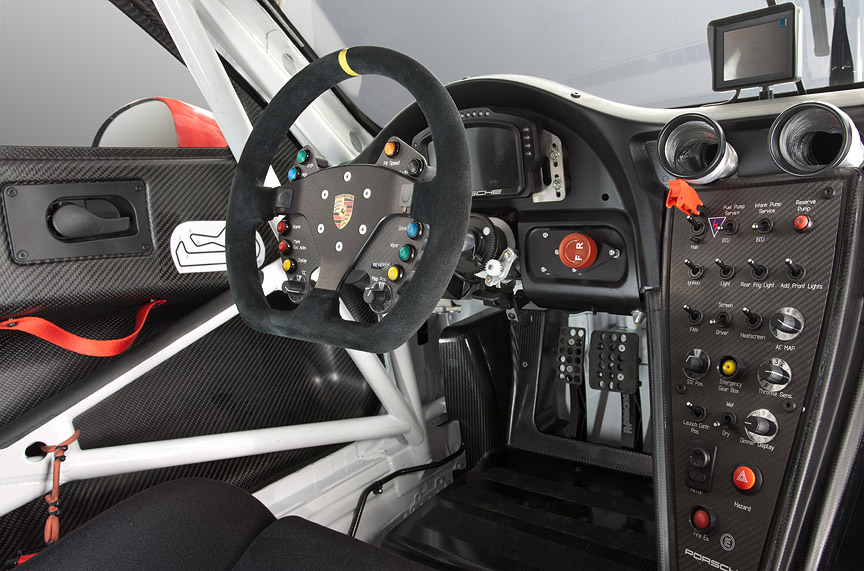
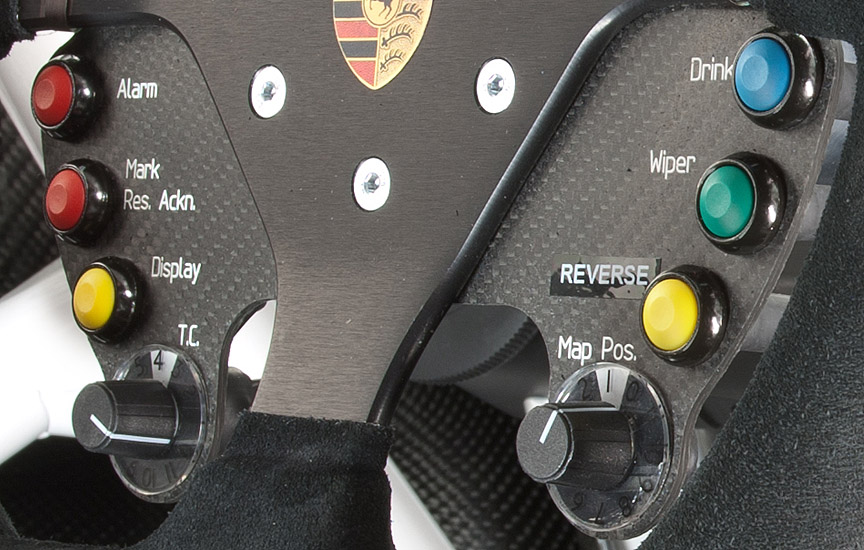
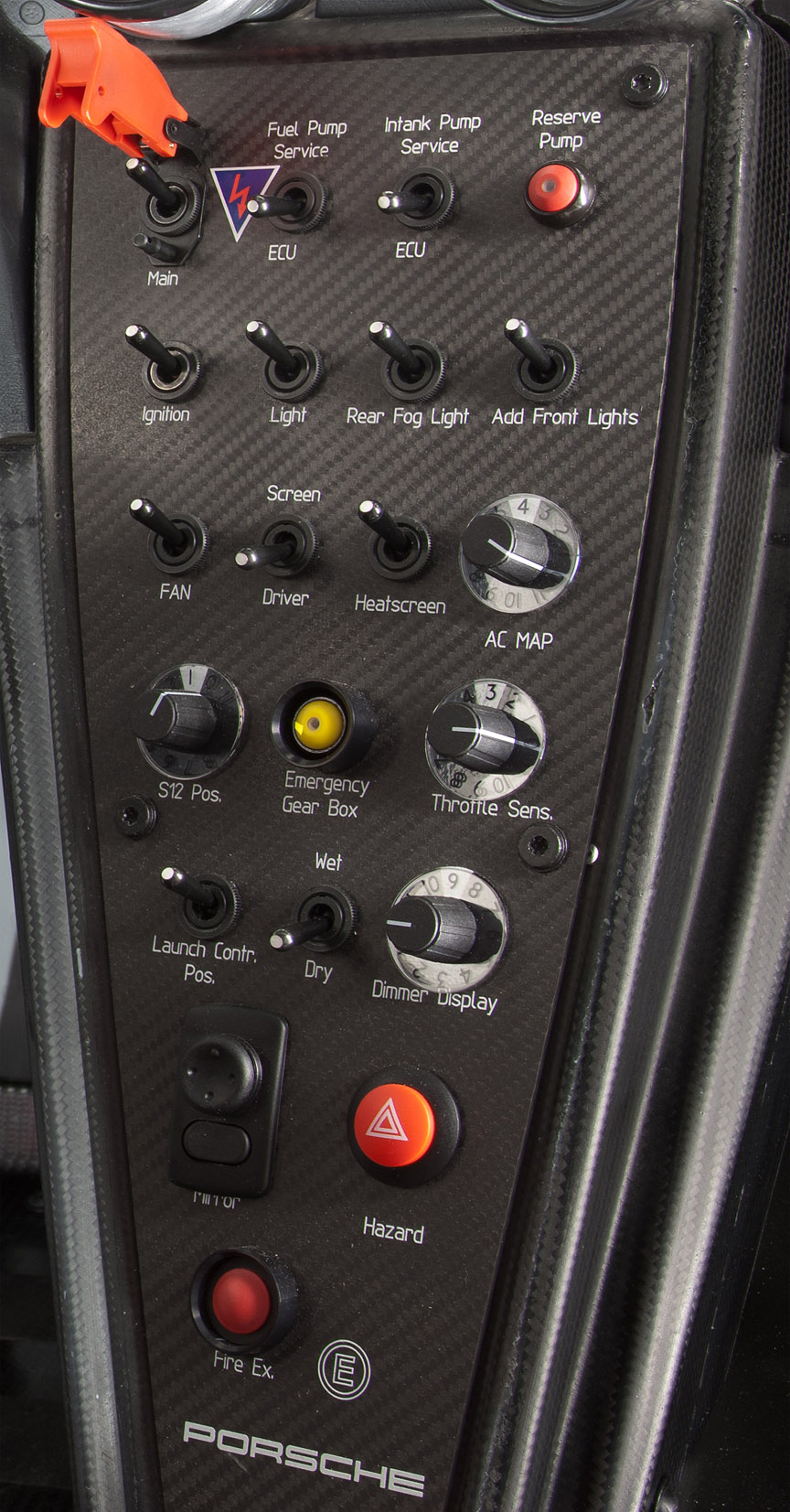
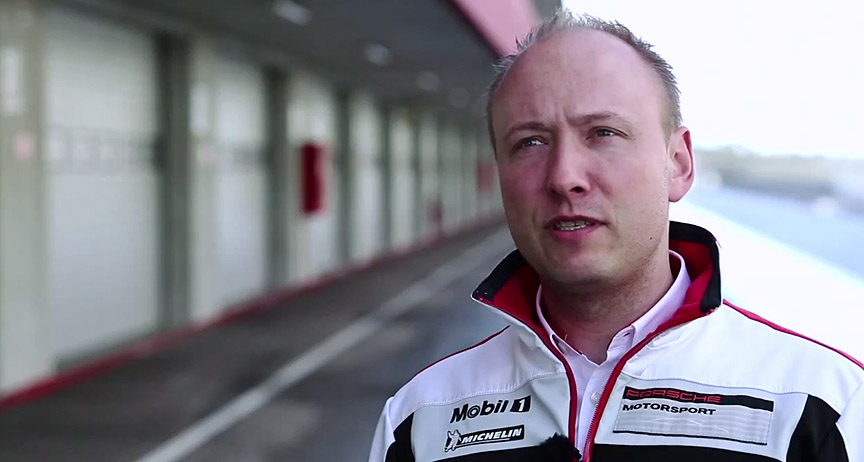
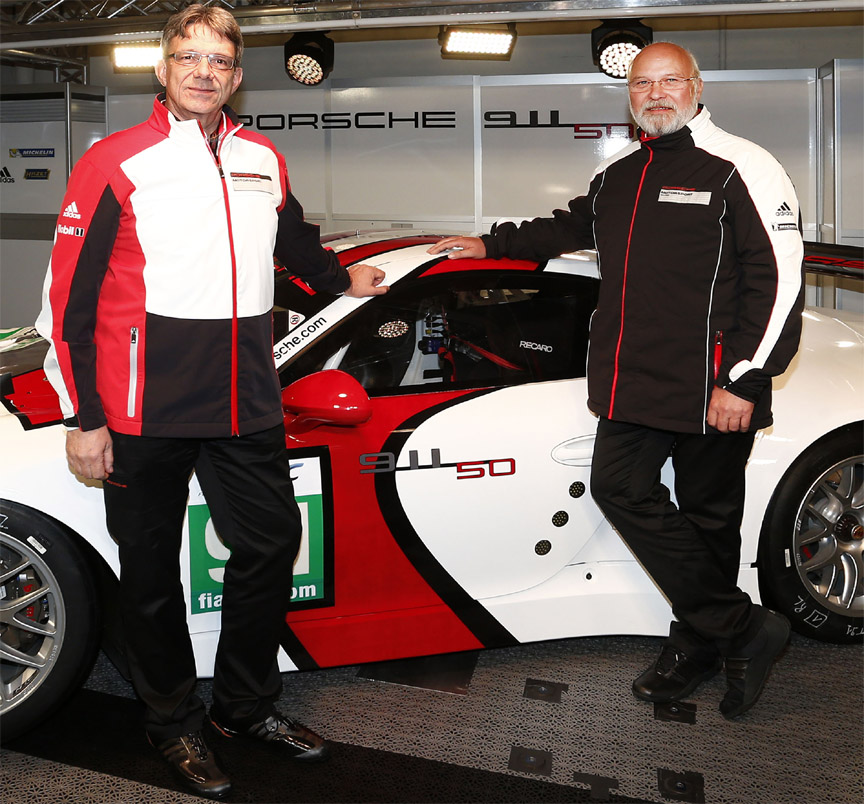
2013 Le Mans 24h race
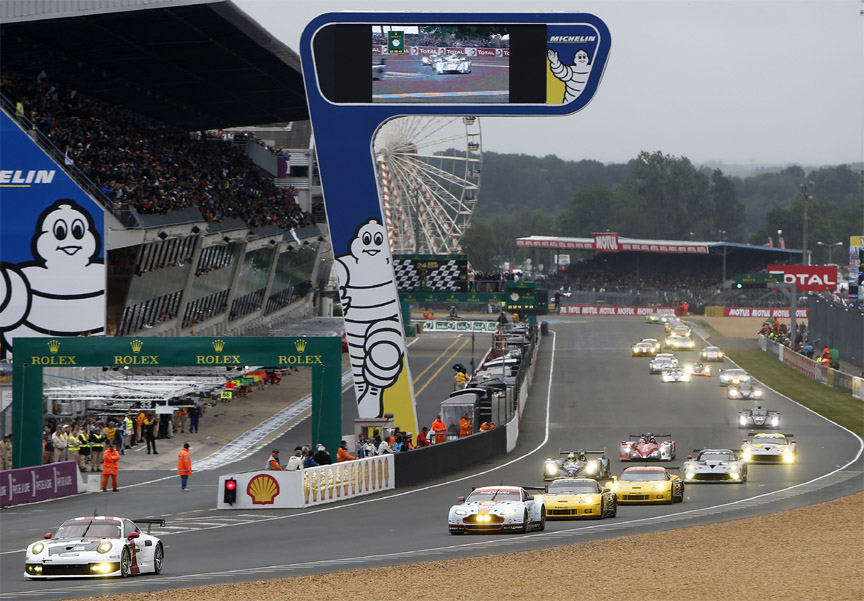
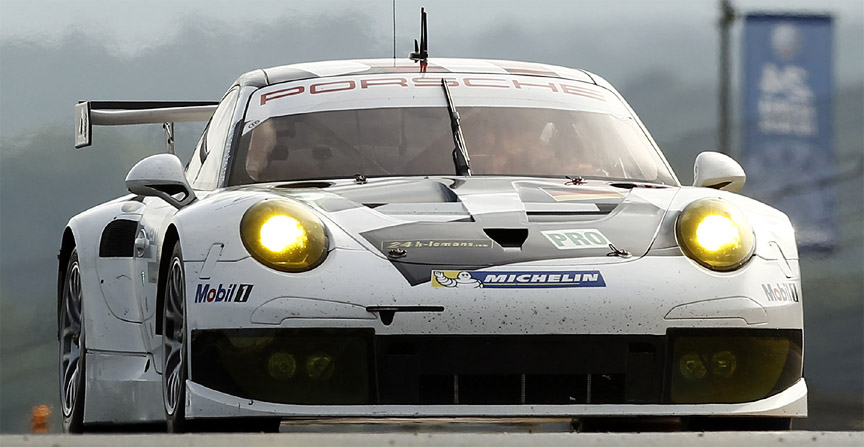


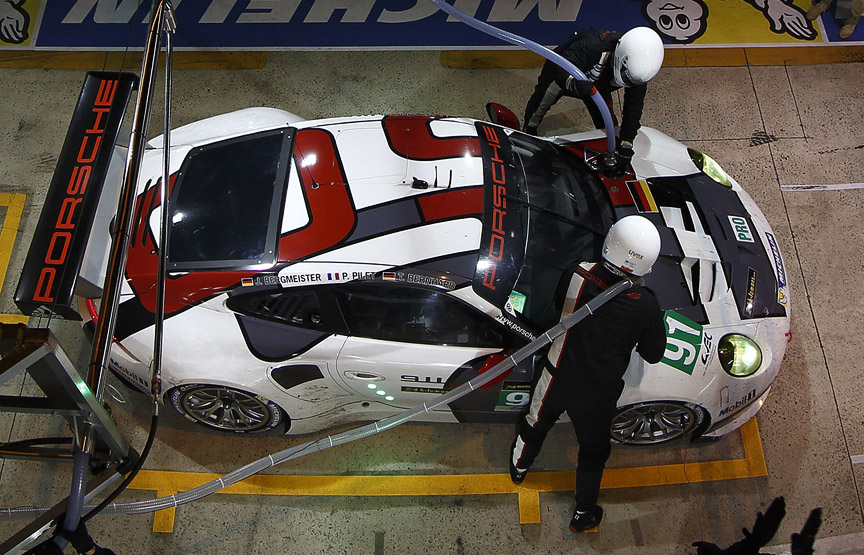
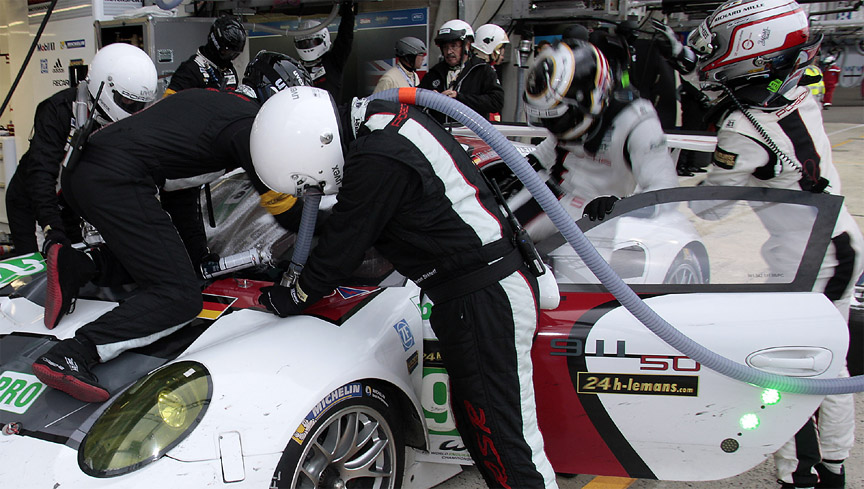
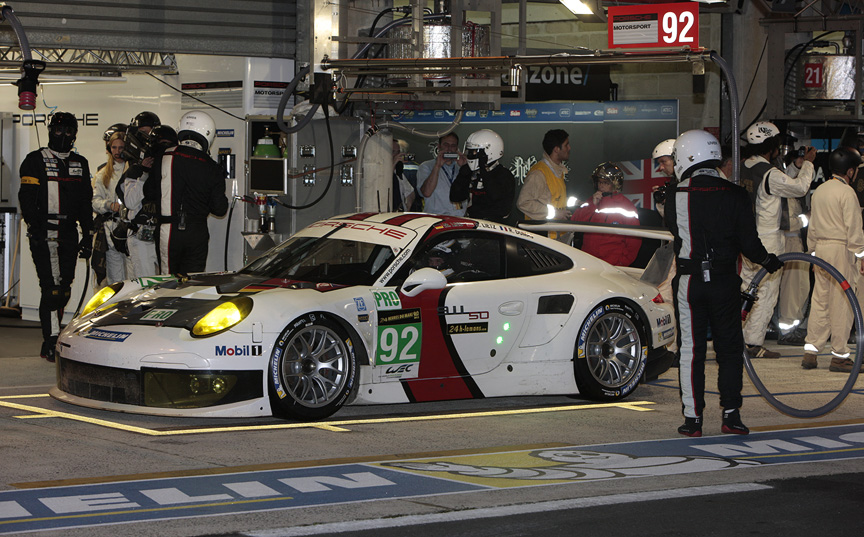
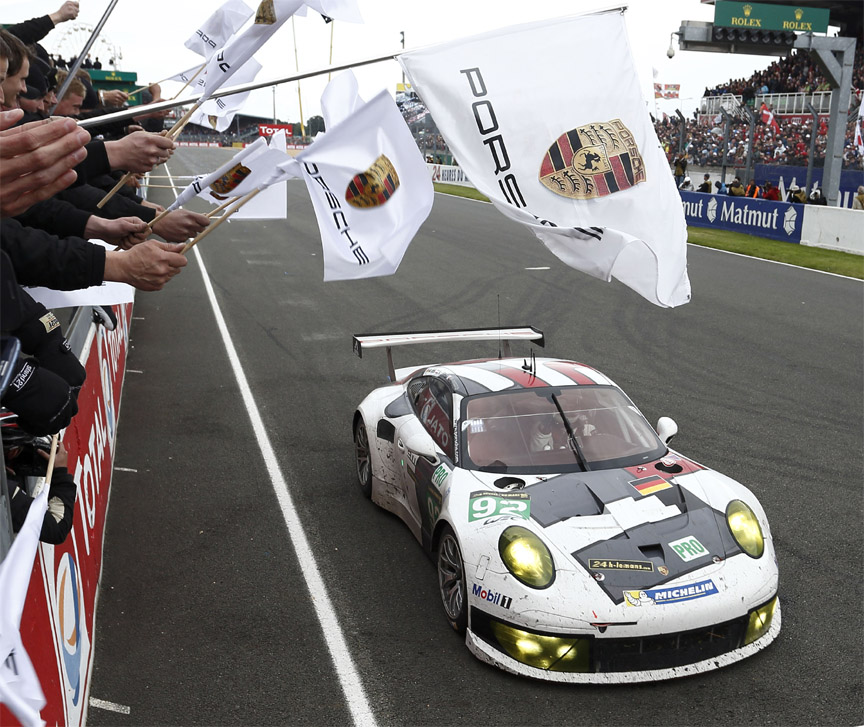
2013 Le Mans 24h GTE Pro results
- 315 laps #92 Porsche 911 991 RSR (16. overall) Porsche AG Team Manthey / Marc Lieb, Richard Lietz, Romain Dumas
- 315 laps #91 Porsche 911 991 RSR (17. overall) Porsche AG Team Manthey / Jörg Bergmeister, Timo Bernhard, Patrick Pilet
- 314 laps #97 Aston Martin Vantage V8
2014 Daytona 24h
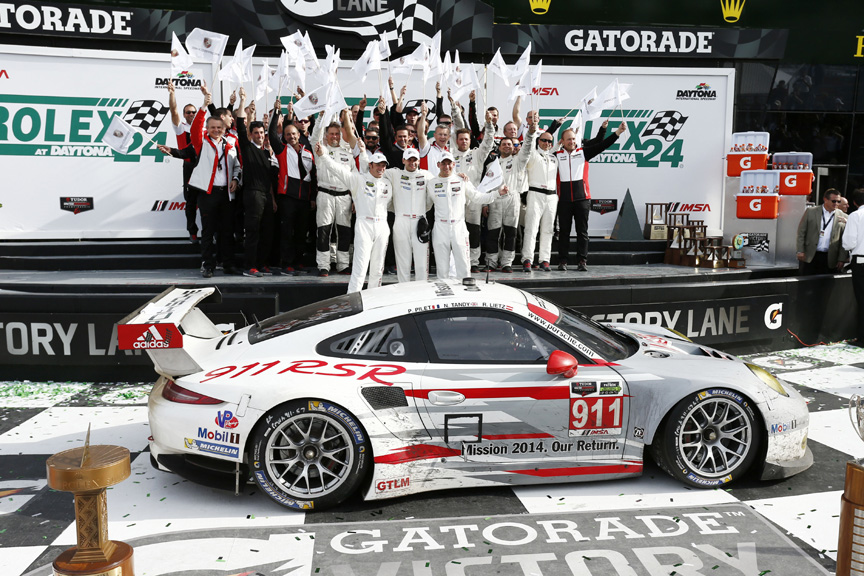
2014 January 26: GTLM class winner (6th overall) #911 991 RSR of Nick Tandy/Richard Lietz/Patrick Pilet
2014 Le Mans 24h
It was the first time after 16 years, that Porsche was back in top class, so the attenton of Porsche fans was now on the 919 hybrid instead of the 991 RSR. The 919 was problematic on its first year and scored 11th. The best 991 scored 3rd in GTE Pro class (17th overall, 337 laps).

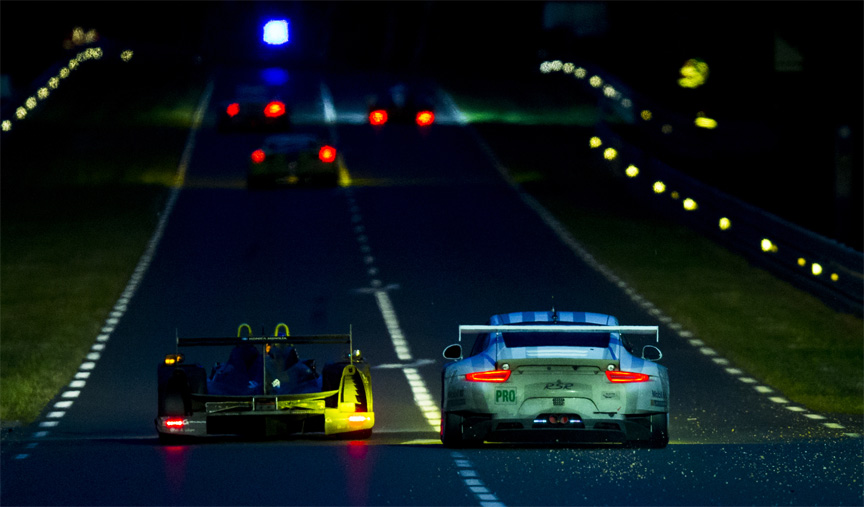
2015 Le Mans 24h
Like in 2013 and 2014, the factory team entered two 911 991 RSR in the GTE Pro class. In addition there were three 991 RSR entered in the GTE Am class by private teams. With just 58 minutes into the race, shocking news arrived to the Porsche Team Manthey in the pits – the #92 car had bursted into the flames on the Mulsanne straight.
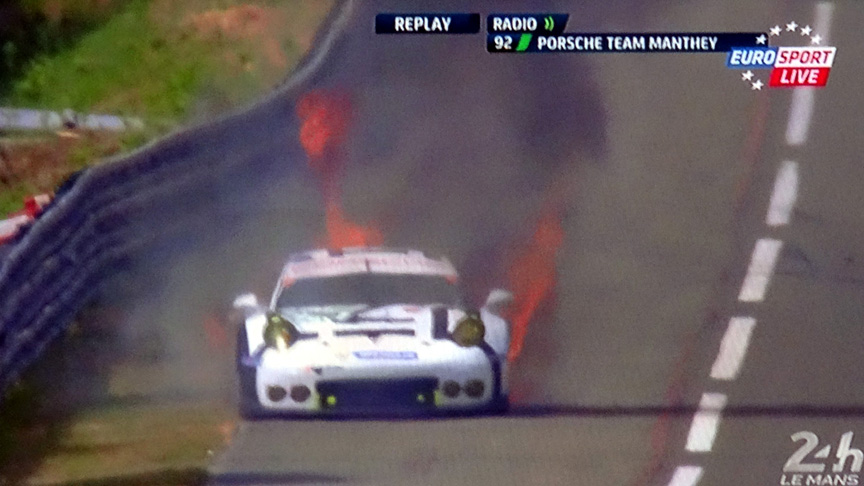
The second 991 RSR to burst into the flames was the Abu Dhabi-Proton Racing car.
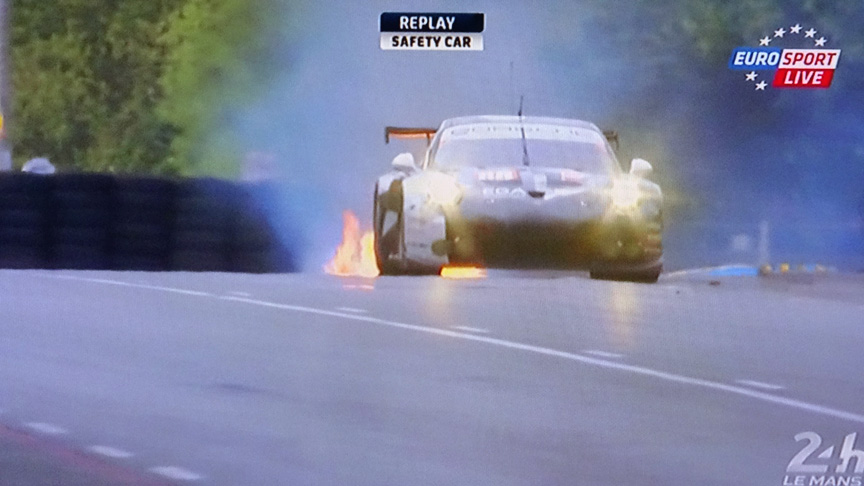
The best result for GT-class Porsche was achieved by Patrick Dempsey, Patrick Long and Marco Seefried of Dempsey Racing who scored 2nd in the GTE Am class and 22nd overall.
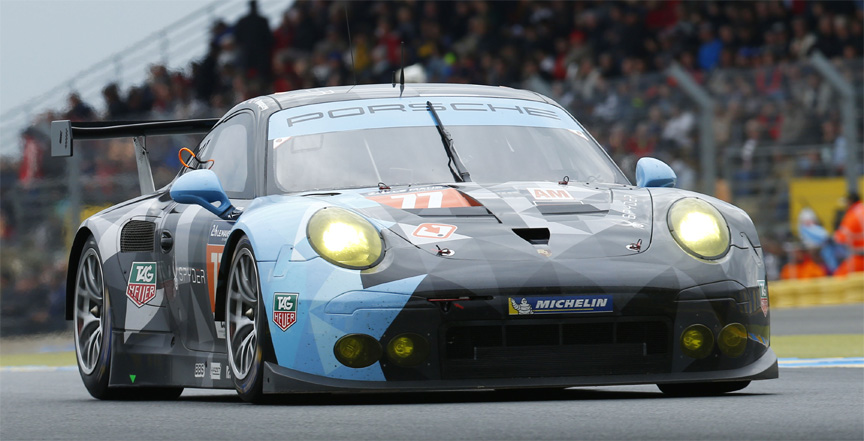
Despite the unsuccessful Le Mans 24h for the works 911 team, the 2015 season was won by Porsche. Both the World Endurance Cup for GT Manufacturers and the World Endurance Cup for GT Drivers thanks to Porsche driver Richard Lietz.


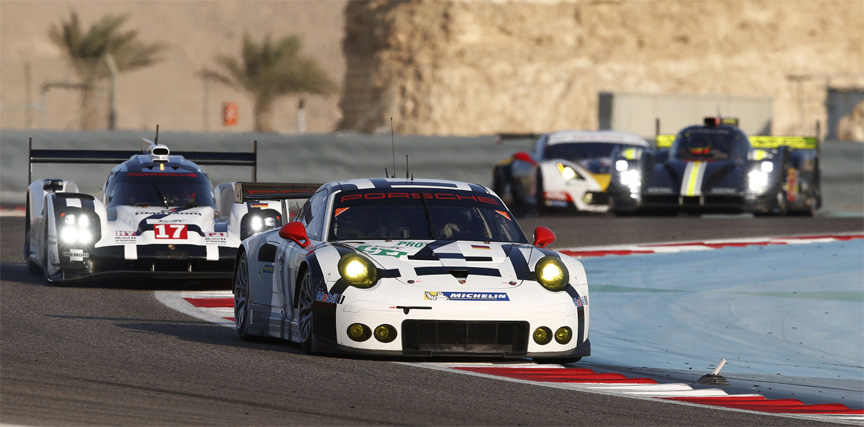
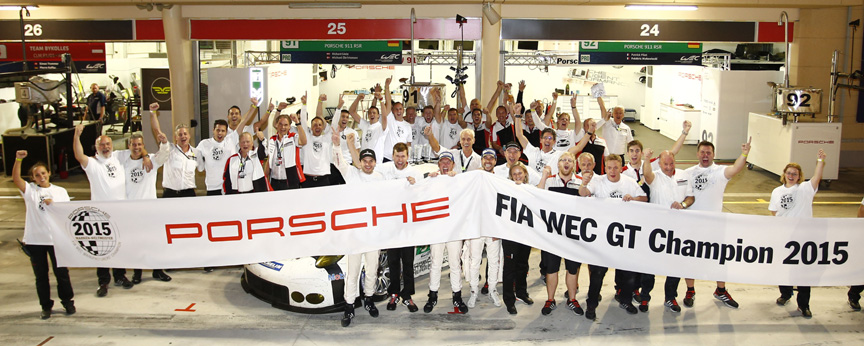
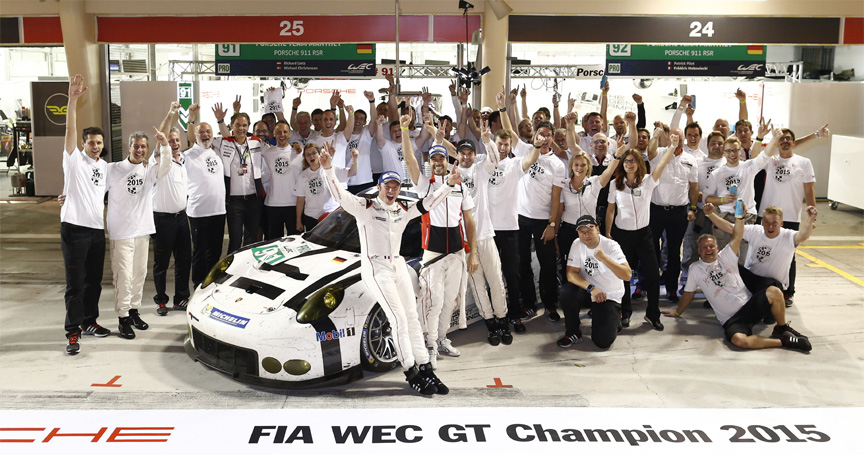
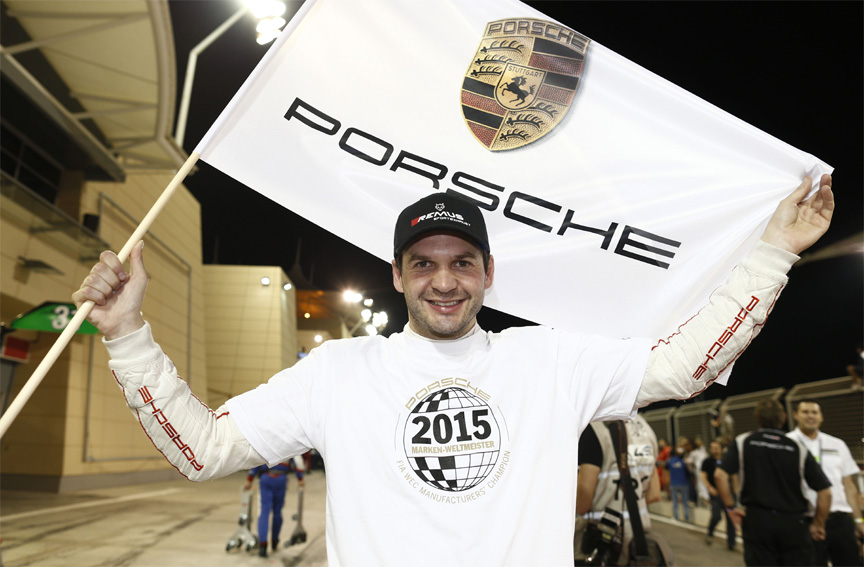
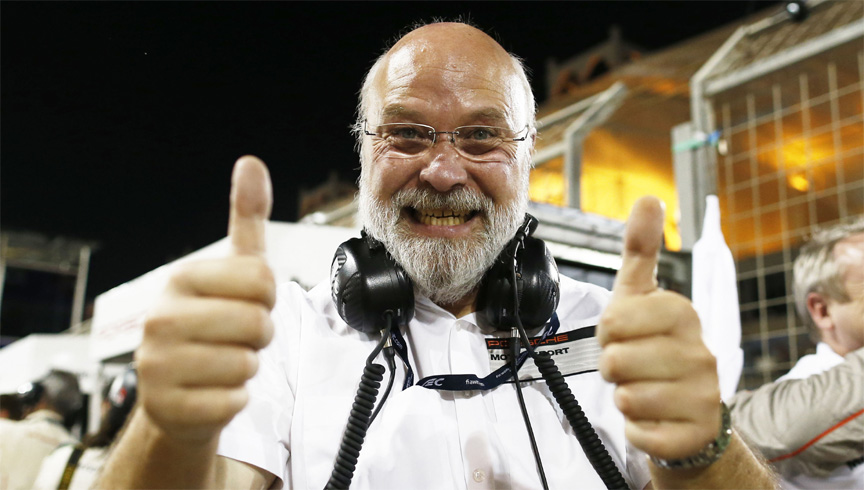
2015 World Endurance Cup for GT Manufacturers
- Porsche 290 points
- Ferrari 286 points 2
- Aston Martin 192 points
2015 World Endurance Cup for GT Drivers
- Richard Lietz (Porsche) 145.0 points
- Gianmaria Bruni (Ferrari) 131.5 points
- Toni Vilander (Ferrari) 131.5 points
In 2013 Porsche was third in the GT manufacturers category and has moved up since. In 2014 Porsche finished the season with second place in the GT manufacturers category and third in the drivers category. The 2015 season was a complete success for Porsche as it dominated in the LMP1 with the 919 hybrid and also won the GT manufacturers and GT drivers championships with the 911 991 RSR.
2016 modifications
The 991 RSR underwent modifications for the 2016 season, particularly to the aerodynamics to comply with the new regulations. The position of the rear wing was moved further to the back. The rear diffuser is now considerably larger. The 911 RSR fielded by the Porsche North America works team received a modified front spoiler lip as well as very wide side sills. A new seat and an enlarged hatch in the roof further improve the already high safety standards.
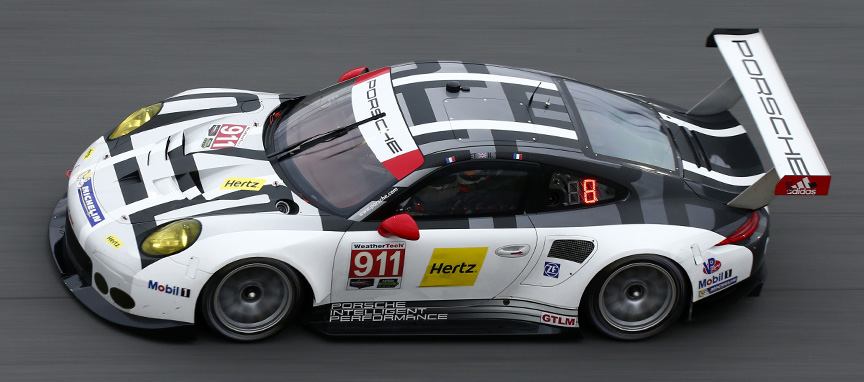
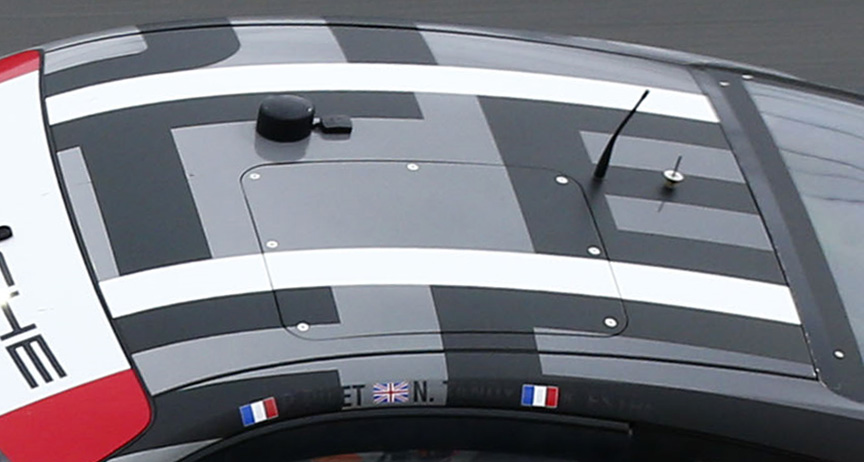
2016 Le Mans 24h
911s with fully burning engines were seen again like at Le Mans in 2015. The only podium place for 911 came in the GTE Am class where Al Qubaisi/Heinemeier-Hansson/Long scored 3rd in their Abu Dhabi-Proton Racing 991 RSR #88. The engine of the #88 had burned down a year before.
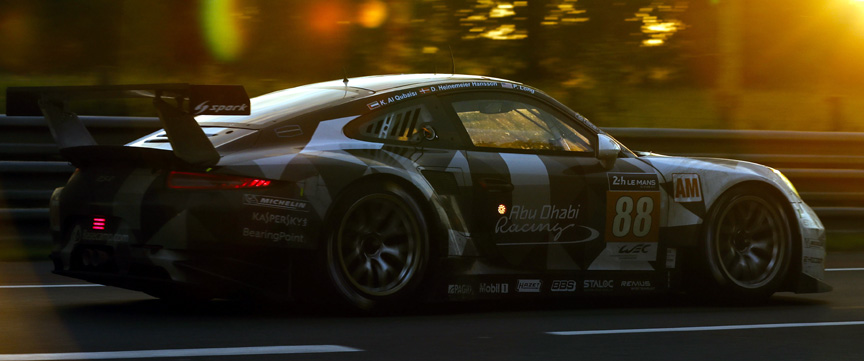
Press Release
Porsche has developed a new GT race car for the World Endurance Championship (WEC) and the Le Mans 24 Hours. The new 911 RSR is characterised by consequent lightweight design and sophisticated aerodynamics. The exceptional vehicle styling honours a very special anniversary: From a bird’s eye perspective, the numbers 50 and 911 are visible. These stand for 50 years of the Porsche 911. The Porsche AG Team Manthey works squad exclusively fields two Porsche 911 RSR in the 2013 season.
The new 911 RSR, which is based on the seventh generation of the iconic 911 sports car, follows in the footsteps of its successful predecessor, the 911 GT3 RSR. As with the production vehicle, the wheelbase grew by about ten centimetres. A new wishbone front suspension replaces the previously used McPherson struts. Another new development from Porsche Motorsport is the particularly lightweight racing gearbox. The six gears are selected via paddles on the steering wheel. The 460 hp, 4.0-litre six-cylinder boxer engine was taken from the predecessor and optimised in detail.
One of the priorities in the development of the new 911 RSR was the more evenly balanced weight distribution. The centre of gravity is also significantly lower than that of its predecessor. Carbon fibre played a crucial role in the new design. The front and rear mudguards, front and rear lids, doors, underbody, wheel arches, rear wing, dashboard and centre console are constructed from the very light and strong material. Moreover, all windows are made of particularly thin and light polycarbonate. Also contributing to the weight reduction is the lithium-ion battery known from the GT road-legal models.
The look of the new 911 RSR is dominated by the flared mudguards and the deep cooling air intakes at the front. With the new air ducting, the radiator is now centrally-located in the front and even more effective than in the previous model. At the same time, the cockpit air conditioning became more efficient. The quick-change concept of the body parts was specially adapted for endurance racing, allowing for easier maintenance and shorter repair times. The front end, front lid and rear panel are fitted with quick release systems and can be replaced within seconds.
Competing in the Porsche 911 RSR with starting number 92 are Porsche works drivers Marc Lieb (Germany) and Richard Lietz (Austria), who already shared a cockpit in the 2012 WEC. At the first two races of the season in Silverstone (14.4) and Spa (4.5) as well as at the 24 Hours of Le Mans (22.6), they receive support from their works driver colleague Romain Dumas (France). Factory pilots also drive the #91 sister car, with Joerg Bergmeister (Germany) and Patrick Pilet (France) making up a team. In Silverstone, Spa and Le Mans, the duo is joined by Timo Bernhard (Germany).
Story by Dr. Ing. h.c. F. Porsche Aktiengesellschaft


